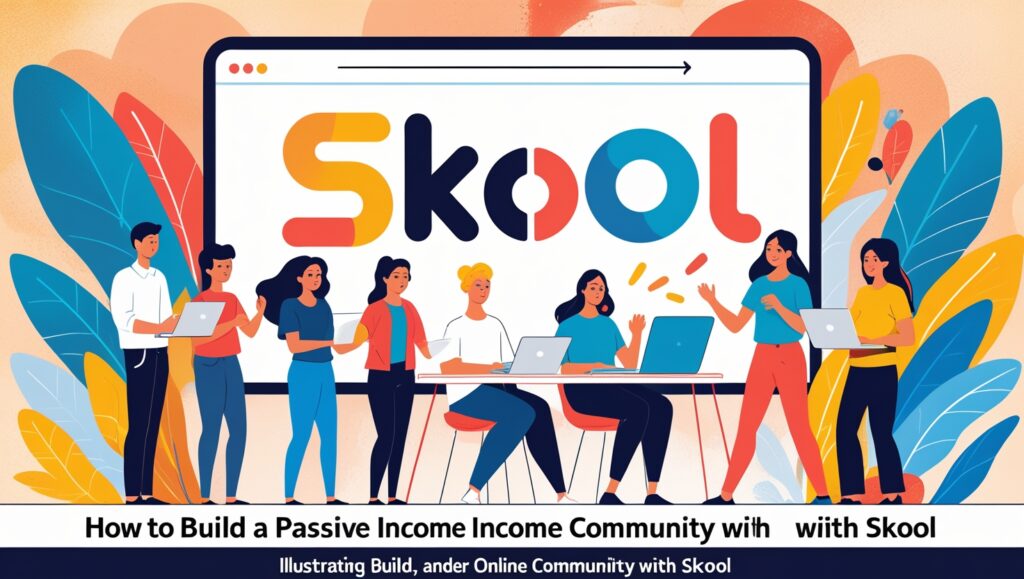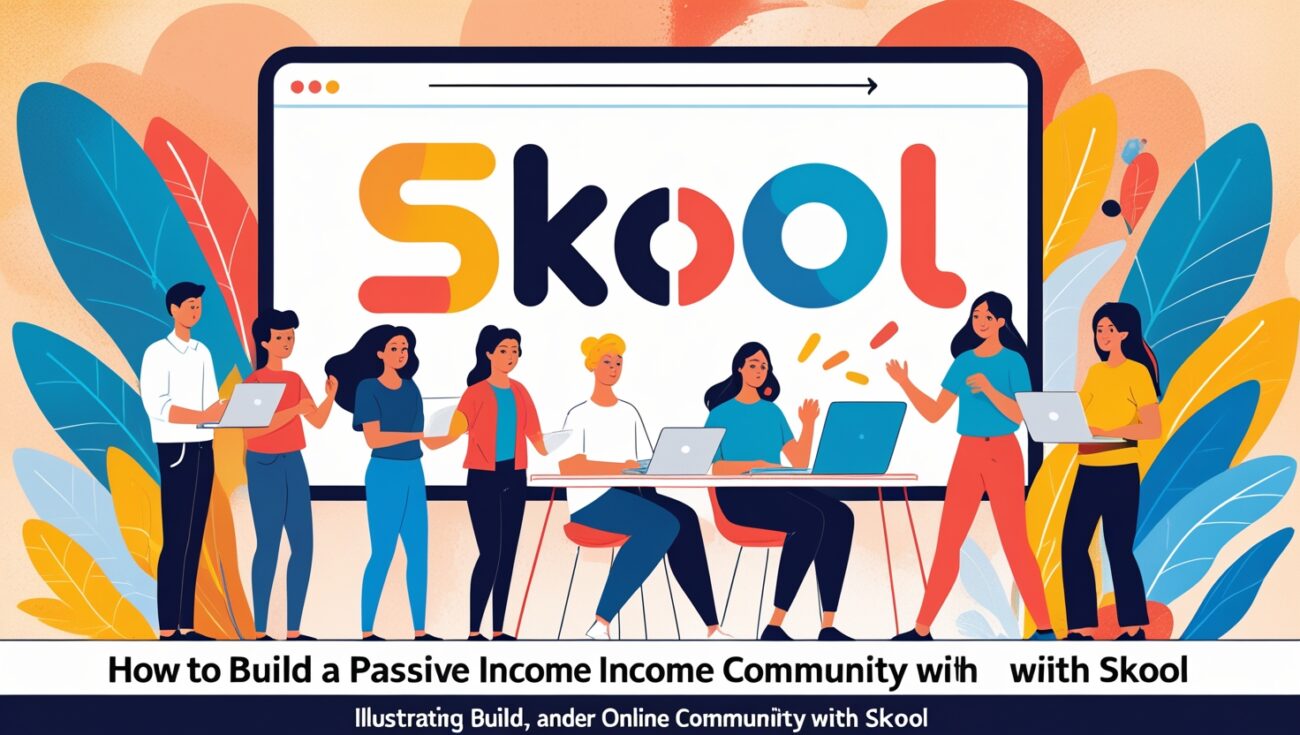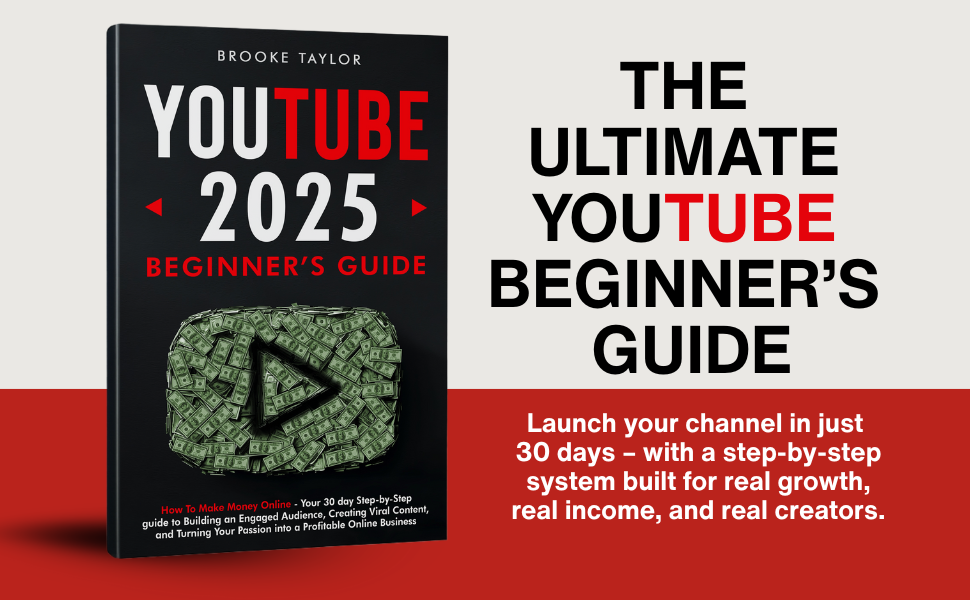How to Build a Passive Income Community with Skool
If you’re looking to create recurring income without working 24/7, I can tell you from experience: building a passive income community is one of the smartest moves you can make. I used to chase clients, sell one-off products, and constantly launch to stay afloat. That changed when I discovered how to build a simple, profitable membership using Skool.
In this post, I’ll walk you through exactly how I built my passive income community with Skool — from setup to monetization — and how you can do the same without complicated funnels or expensive software stacks.
Start your own community here using my Skool affiliate link — it’s the tool I use every day.

Table of Contents
Why Skool Is Perfect for Passive Income
Most platforms overcomplicate things. You need one tool for hosting content, another for payments, another for community, and something else for live events. I wanted one solution — something clean, user-friendly, and capable of running on autopilot. That’s exactly what Skool gave me.
With Skool, I host my course, manage my members, run a community, and even handle payments — all in one dashboard. No plugins. No broken automations. Just one clean flow that works every time.
Step 1: Define Your Offer
Before launching your community, ask yourself: What result am I helping people get? Your offer should solve a problem that people are willing to pay monthly for. Mine was helping beginner traders find simple setups and stay consistent, so I packaged that into a course + community.
I uploaded my content to the Classroom tab in Skool and structured it into easy-to-follow modules. The rest — engagement, retention, and passive income — flowed naturally from there.
Step 2: Set Up the Skool Community
I created a new Skool group, customized the banner and description, and added my course materials. I also pinned a welcome post and outlined how to get started. The interface is clean, so members don’t get lost.
The real magic is in the Community tab — where people ask questions, share wins, and help each other. This organic engagement builds retention, and retention is what fuels monthly recurring income.
Step 3: Connect Payments
Skool lets you set a monthly or one-time price. I went with a recurring model — $49/month — and connected my Stripe account in minutes. Every time someone joins, the payment is processed automatically, and they get instant access.
No need for external checkout pages or manual invites. The entire payment and access flow is 100% automated, which means I can earn while I sleep.
Here’s where you can start your own passive income group on Skool
Step 4: Promote Your Group
I didn’t need a fancy website or funnel. I shared my Skool group on Instagram, YouTube, and my email list. Because the offer was clear — community + course + coaching — people joined quickly.
Skool even gives you a built-in sales page with testimonials and visuals, so you don’t need to build a custom site. This reduces your startup time to days, not months.
Step 5: Let Engagement Work for You
Once members are inside, the platform encourages them to participate. They earn points for posting and replying, and that builds momentum. I barely moderate the group — it runs itself thanks to the structure and community vibe.
This is where passive income becomes real: I provide the value upfront (through my course and pinned content), and the community keeps itself alive through questions, support, and interaction.
One of the smartest things I did early on was to simplify the offer. I didn’t try to include ten bonuses or stack a bunch of upsells. I just focused on one outcome: helping people improve their skills inside a tight-knit community. That clarity made it easier to attract the right people.
Skool helped me focus more on results and less on tech headaches. I didn’t need to patch together a website, a membership plugin, a payment processor, and a forum. Everything is native to Skool, and that gave me time to actually support my members — not babysit the backend.
Another big win for passive income is how Skool handles onboarding. When someone joins, they instantly land in the group, see the welcome post, and know what to do next. I even pre-recorded a welcome video and pinned it. That one video saves me from repeating myself in DMs or emails.
When people know what to expect, they’re more likely to stay. That’s why I also added a roadmap post that shows what they’ll learn over the next 30 days. I noticed my churn rate dropped just from doing that, because people saw a clear reason to stick around.
The built-in calendar tool is another passive income asset. I schedule monthly live sessions, and members get reminders automatically. This makes the group feel active without me having to push people. They just show up — and that keeps the community alive.
I also use the classroom feature to drip out bonus content every few weeks. It’s a simple way to add long-term value without recreating the entire course. Members love when new lessons drop, and I didn’t have to build anything new — I just uploaded it directly inside Skool.
One unexpected bonus is that members sometimes refer others organically. They’ll invite friends or colleagues just because the experience is that good. And because of Skool’s clean invite system, they can share the group easily without needing extra logins or instructions.
Skool gives me peace of mind because it’s low-maintenance. I’ve used other platforms where updates would break features, and plugins would stop working. That’s not the case here. Skool is stable, fast, and always improving — and that means fewer fires to put out on my end.
What makes this setup truly passive is that I only need to promote it once, and the rest is on autopilot. I still engage a few times a week, but the heavy lifting — content, payments, community interaction — is all handled inside the platform.
Plus, Skool gives me full control over pricing. I can test different monthly rates or even add a one-time lifetime option. I’ve done both, and the flexibility helped me reach different types of customers without needing a second group or new tech.
If you want to build a low-stress business that generates recurring revenue, this is the way. I wish I had started this earlier instead of bouncing between platforms and trying to make everything look perfect. Skool helped me focus on results — and profits.
Here’s the affiliate link I use — start your passive income community today. You don’t need a team or expensive tools. You just need something valuable to teach and a place where people can learn it together.







Plunge into the breathtaking galaxy of EVE Online. Start your journey today. Create alongside millions of pilots worldwide. [url=https://www.eveonline.com/signup?invc=46758c20-63e3-4816-aa0e-f91cff26ade4]Free registration[/url]
Plunge into the expansive realm of EVE Online. Find your fleet today. Create alongside thousands of pilots worldwide. [url=https://www.eveonline.com/signup?invc=46758c20-63e3-4816-aa0e-f91cff26ade4]Download free[/url]